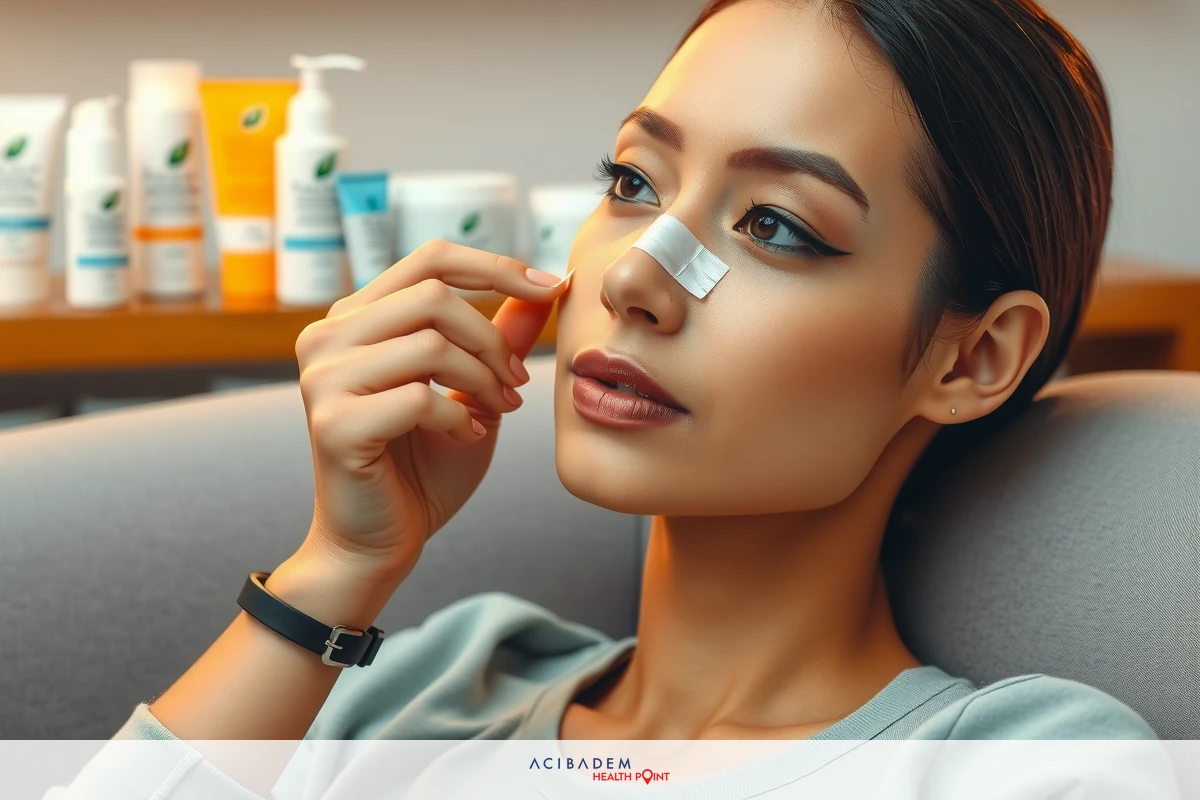How to Tape Tip of Nose After Rhinoplasty
How to Tape Tip of Nose After Rhinoplasty Rhinoplasty, an approach to cosmetic surgery that reshapes the nose, often necessitates post-operation care routines. One such routine involves taping the tip of your nose—a seemingly simple but crucial step in supporting healing and achieving optimum results.
Mastering this art of taping can seem daunting initially. But fear not; with practice and patience, it becomes second nature. Taping aids in reducing swelling, providing support to delicate structures during healing, and helping achieve desirable aesthetic outcomes.
The significance lies not just in what you do but also how you do it. A correct technique for applying tape on your nose after rhinoplasty is essential—it ensures safety while also maximizing benefits.
Why is Taping the Tip of Your Nose Important?
Taping, a seemingly simple post-operative care step following a rhinoplasty surgery, holds paramount importance in healing and achieving desired aesthetic outcomes. Notably, it’s not merely an act; instead, it’s a technique that demands precision. The use of tape on the tip of your nose creates gentle pressure helping reduce swelling—a common aftermath of any surgical procedure.
Furthermore, taping serves as support for fresh incisions and delicate nasal structures during their healing phase. After undergoing rhinoplasty surgery which involves reshaping or resizing the nose—nose tissues need adequate time to heal and adapt to their new form. Here enters taping as a silent hero—it provides essential support keeping tissues in place while they recover.
Lastly but importantly, taping influences final aesthetic results positively. A well- executed taping technique helps maintain the shape given by your surgeon post- rhinoplasty until complete recovery—an essential factor in achieving optimum cosmetic results from your surgery. Thus underscoring its critical role in both immediate post-operative care and long-term satisfaction with one’s rhinoplasty outcome.
Step-by-Step Guide to Taping the Tip of Your Nose
Taping post-rhinoplasty may seem like a daunting task, but by following a methodical step-by-step guide, it can be done effectively. Ensuring correct taping technique not only aids in faster healing but also helps achieve optimal surgical results. Here is an easy-to-follow guide to help you master this post-operative care routine.
1. Start with clean hands and face, this is essential for preventing any potential infection. 2. Cut the tape into strips, the length will depend on your nose’s size and the area that needs support. 3. Positioning your fingers at either side of your nostrils, gently press down as you apply the first strip from one side of your nose tip to the other. 4. Repeat this process with additional strips if necessary, making sure they overlap slightly for better support. 5. Ensure that tape is secure but comfortable; it should not restrict breathing or cause any discomfort.

Tips for Effective Taping
Applying tape to the tip of your nose following a rhinoplasty is more than just adhering strips across your skin. The effectiveness of this post-operative care depends heavily on how well it’s done. Here are some tips that can help enhance the efficacy of taping and contribute to a better healing process.
- Use medical-grade tape: This ensures minimal irritation and maximum comfort.
- Don’t pull or stretch the tape too much: It should provide support but not cause discomfort.
- Keep skin clean before applying the tape: This helps in proper adhesion and prevents potential infections.
- Change the tape regularly: as advised by your surgeon: Keeping fresh tape reduces chances of dirt accumulation or bacterial growth.
- Be patient and gentle while removing old tape: Aggressive pulling might harm sensitive skin or newly healed tissues.
By incorporating these simple yet effective tips into your routine, you can ensure that taping serves its purpose—promoting faster recovery while helping achieve desired aesthetic results after rhinoplasty surgery.
Frequently Asked Questions
How long should I continue taping the tip of my nose after rhinoplasty?
The duration for which you need to tape your nose can vary based on individual healing rates and your surgeon's instructions. Generally, it's recommended for a few weeks post-surgery.
Can I use any type of tape for this purpose?
It is best to use medical-grade tape as it is designed to minimize skin irritation and ensure maximum comfort during the healing process.
What if the taping causes discomfort or pain?
Taping should provide support without causing discomfort. If you experience pain, it might indicate that the tape is too tight or not applied correctly. Consult with your surgeon in such cases.
Are there any alternatives to taping?
While some surgeons may recommend alternatives like special bandages or splints, most find taping effective due its simplicity and effectiveness. Always follow advice from your specific healthcare provider.











